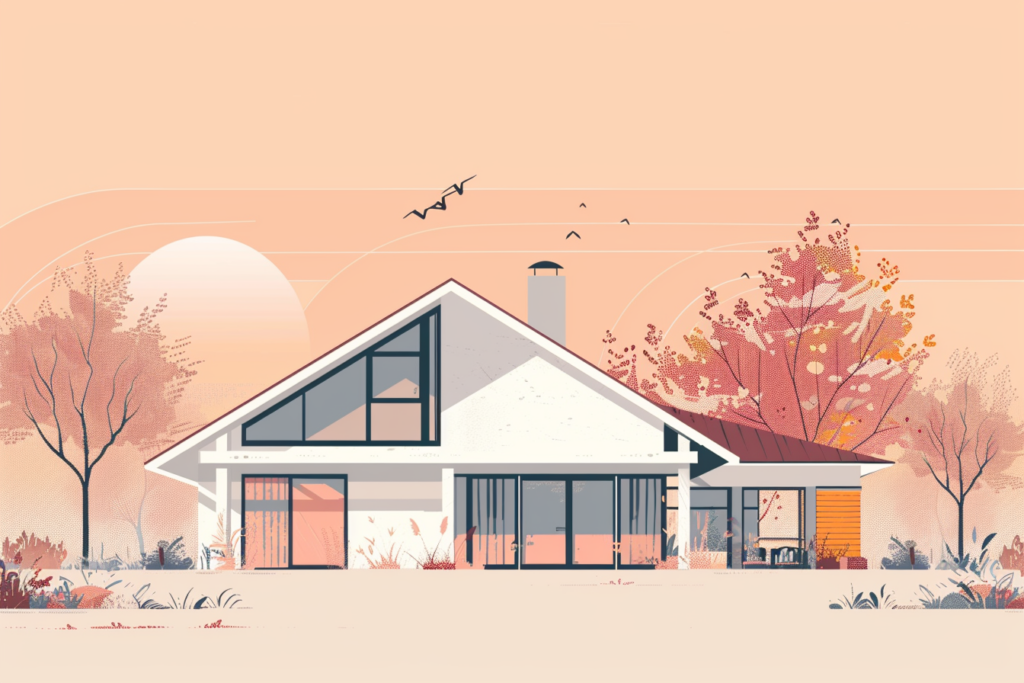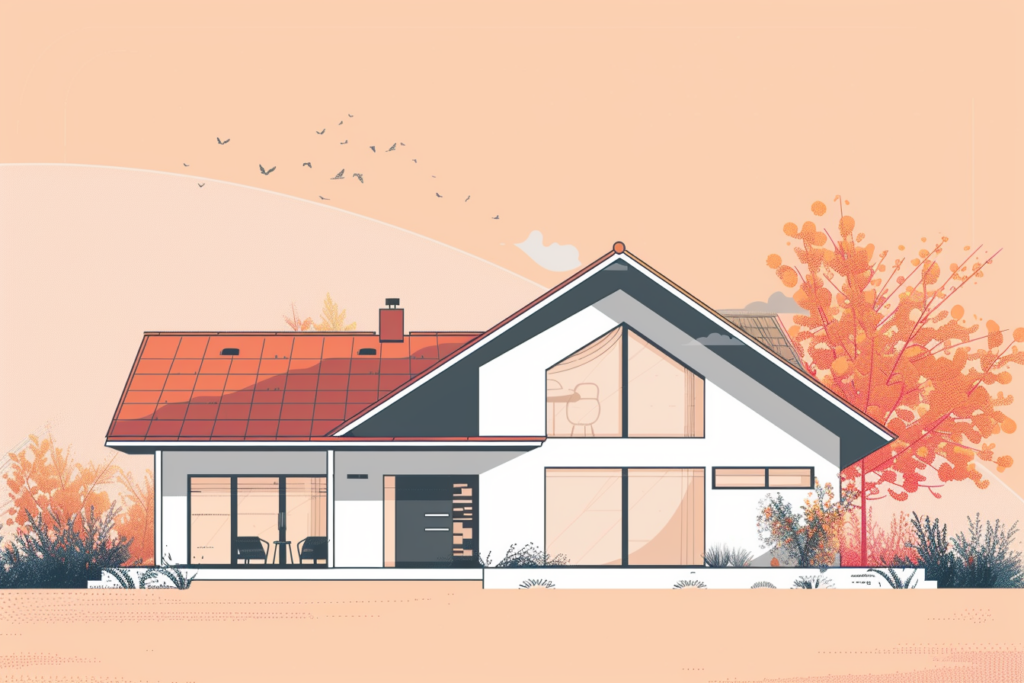Your roof is a critical component of your home, providing protection from the seasonal elements and offers overall structural integrity. However, like all parts of a house, roofs are subject to wear and tear over time.
Recognizing early signs of roof damage can save you from costly repairs and replacements in the future. We’ll outline the key indicators that your roof may need attention.
1. Missing or Damaged Shingles
One of the clearest signs of roof damage is missing shingles. Strong winds, heavy rain, or physical impact can dislodge shingles. Missing shingles leave gaps that might allow for water to pool and potentially penetrate the roof structure, leading to leaks and water damage.
Damaged Shingles
Shingles that are cracked, curled, or blistered also indicate potential problems. Cracks can result from weathering or impact while curling can be caused by moisture buildup or poor installation. Blistering usually results from excessive heat. Inspecting your roof regularly for these issues can help you address problems before they worsen.
2. Granule Loss
Asphalt shingles are coated with granules that look like little pebbles, that protect them from UV rays and add weight, helping them lie flat. Over time, these granules can wear off, especially if your roof is aging or exposed to severe weather conditions.
Granule loss is often visible in gutters and downspouts as small, coarse particles. If you notice significant granule accumulation, it’s a sign that your shingles could be damaged or nearing the end of their lifespan and need replacement.
3. Water Stains and Leaks
Another clear indicator of roof issues is visible water spots or stains on your ceiling or walls. These stains can be yellow, brown, or copper-colored and may grow over time. Even small stains should not be ignored, as they can signal a much larger problem with your roof.
Attic Leaks
Inspecting your attic regularly for signs of water infiltration can help you catch leaks early. Look for damp insulation, mold growth, or wet spots on the roof decking. Any signs of moisture in the attic should prompt a thorough roof inspection.
4. Sagging Roof Deck
A sagging roof deck (can look a little wavy or uneven) is a serious issue that indicates structural problems. This can result from prolonged water exposure, which weakens the supporting structures.
A sagging roof may be noticeable from the outside as dips or uneven areas on the roof surface. Inside the attic, a sagging roof deck may be visible as bowed or warped wooden beams. Addressing this issue promptly is crucial to prevent further damage and potential collapse.
5. Flashing Damage

Flashing is a specific material used to seal joints and seams around roof features such as chimneys, vents, and skylights. When flashing becomes destroyed, it can lead to leaks and water damage. Common signs of flashing problems include:
- Rust or corrosion on metal flashing
- Cracked or missing caulk or sealant
- Gaps or separation between the flashing and roof surface
Regularly inspecting and maintaining flashing can help prevent future leaks, increase the lifespan of your roof and offer peace of mind.
6. Moss and Algae Growth
Moss and algae growth might not seem like a big deal, but it can cause significant damage if left untreated. Moss holds excess water against the roof surface, which can lead to rotting and deteriorating shingles. Algae can also degrade shingles and reduce their reflective properties, leading to higher energy costs.
To address moss and algae growth, clean your roof with a gentle water and bleach solution or a commercial roof cleaner. Installing new zinc or copper strips can help prevent future growth if added near the edge.
7. Higher Energy Bills
A damaged roof can affect your home’s energy efficiency. If you notice a sudden increase in your heating or cooling costs, it could be due to poor roof insulation or ventilation. Gaps in the roof structure can allow excess air to escape, in turn making your HVAC system work harder to cool the inside down. Inspecting your roof and attic for signs of damage can help identify and address these issues, improving your home’s energy efficiency.
8. Age of the Roof
Your roof’s age plays an important factor in determining its condition. Asphalt shingle roofs generally last up to 20 to 25 years, while tile, metal, and slate roofs can last longer. If your roof is coming to the end of its life, it’s essential to inspect it more regularly for signs of wear and tear, especially as the seasons change or after a big storm.
Proactively replacing an aging roof can prevent more severe damage and costly repairs in the future.
9. Damaged Roof Valleys
Roof valleys are the low points where two roof slopes meet. They are particularly vulnerable to damage because they channel water runoff. Damaged or improperly installed valleys can lead to leaks and water infiltration. Signs of valley damage include missing shingles, cracked or worn valley flashing, and water stains along the valley lines.
10. Gutter Issues
Your gutters also play a massive role in leading water away from your roof and foundation. Clogged or damaged gutters will eventually cause water to back up and stay on the roof, leading to leaks and water damage. Signs of gutter issues include:
- Sagging or detached gutters
- Rust or corrosion
- Water overflowing from the gutters during rain
- Accumulation of debris (leaves and twigs)
Routine cleaning and maintaining your gutters can help prevent roof damage and prolong their lifespan.
Conclusion
Nipping roof damage in the butt early is essential for maintaining the integrity of your home. Routine inspections and quick repairs can prevent minor issues from escalating into major problems.
If you notice any of the signs mentioned above, it’s crucial to take action. In some cases, you may be able to handle minor repairs yourself, but for more significant issues, it’s advisable to consult a professional roofing contractor. By staying vigilant and proactive, you can ensure your family and home function effectively for years to come.
You might also be interested in: The Importance Of Roof Inspections And Maintenance




